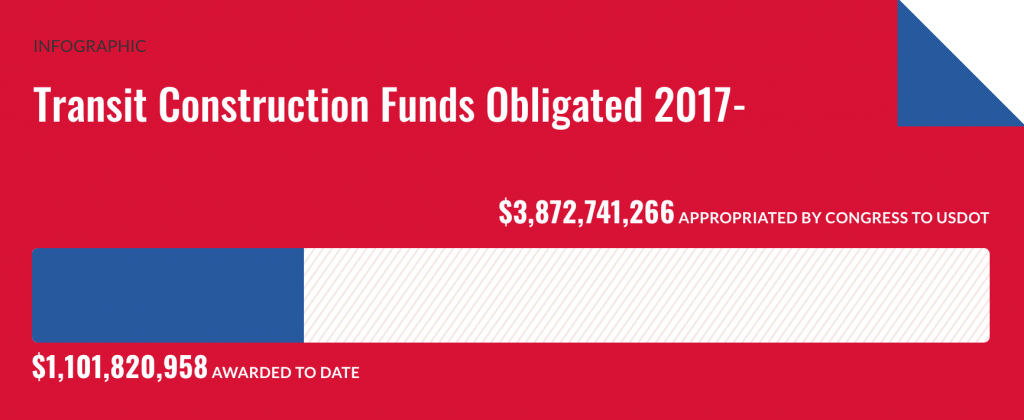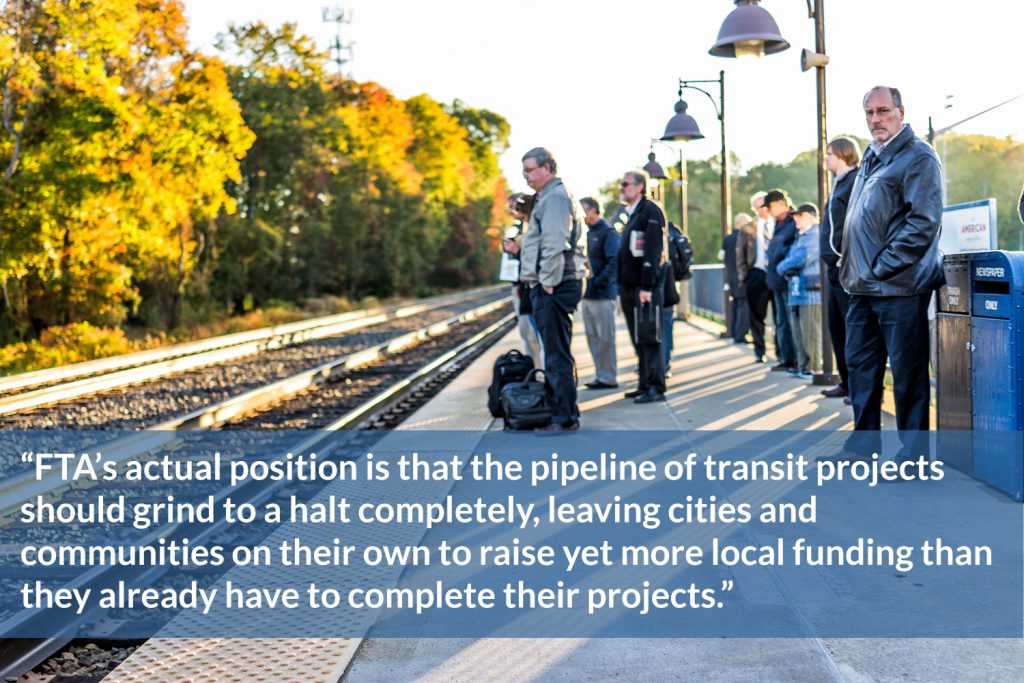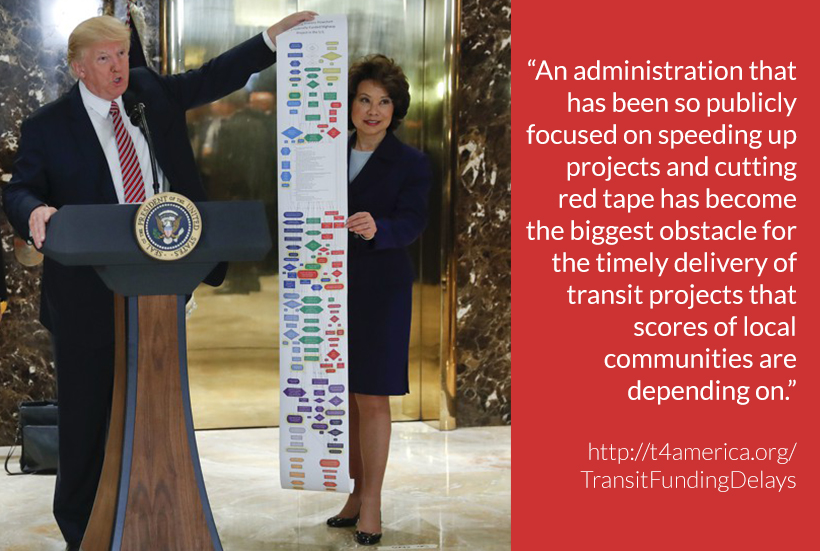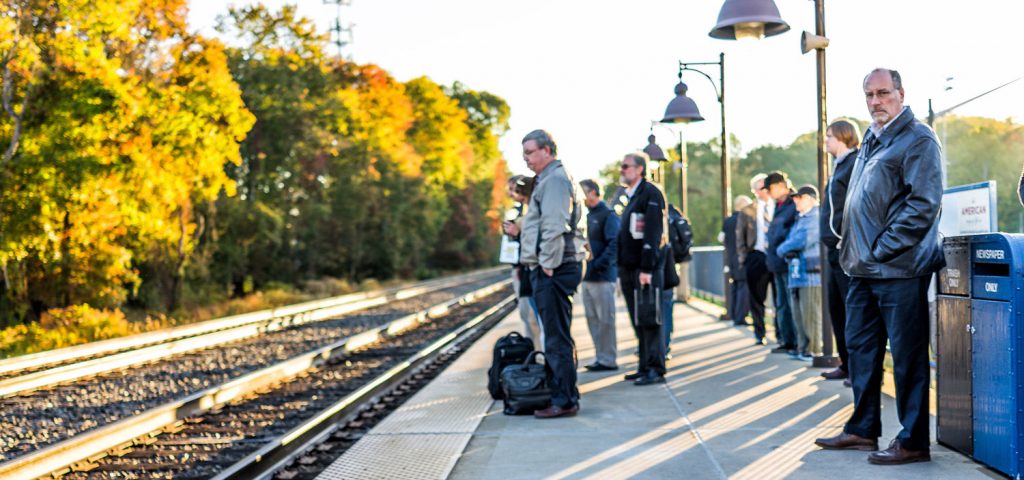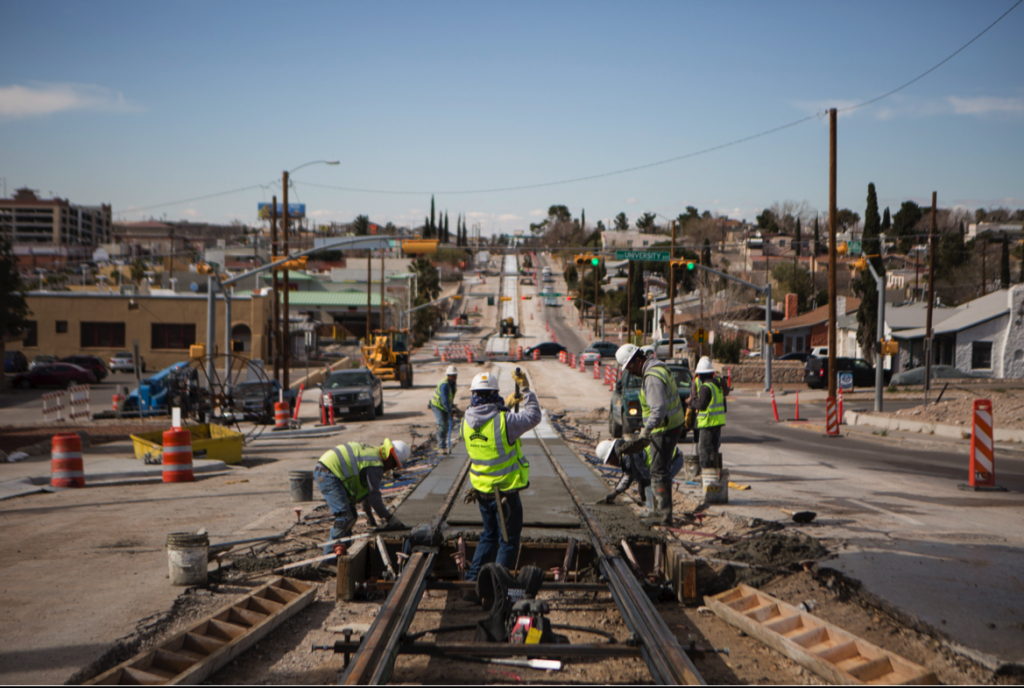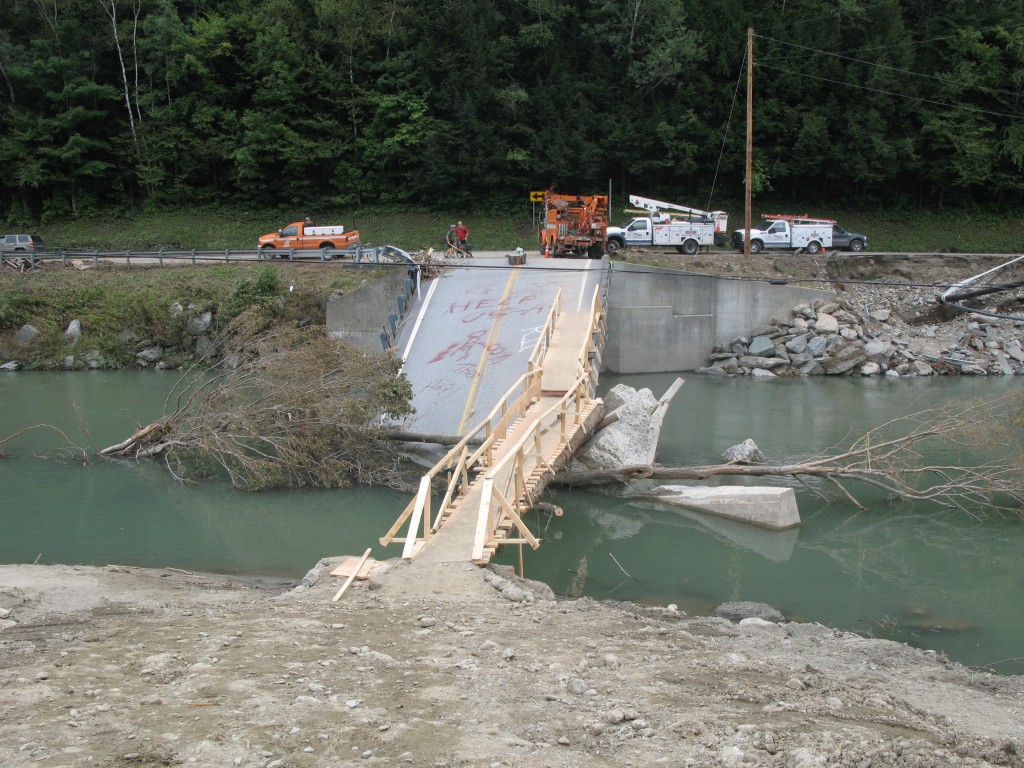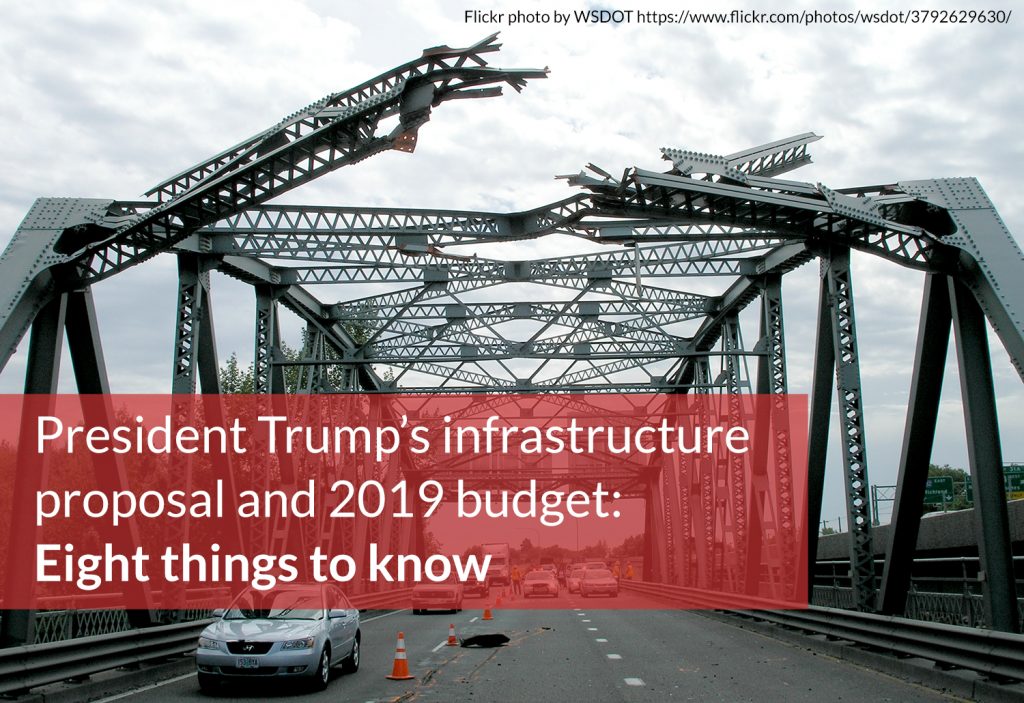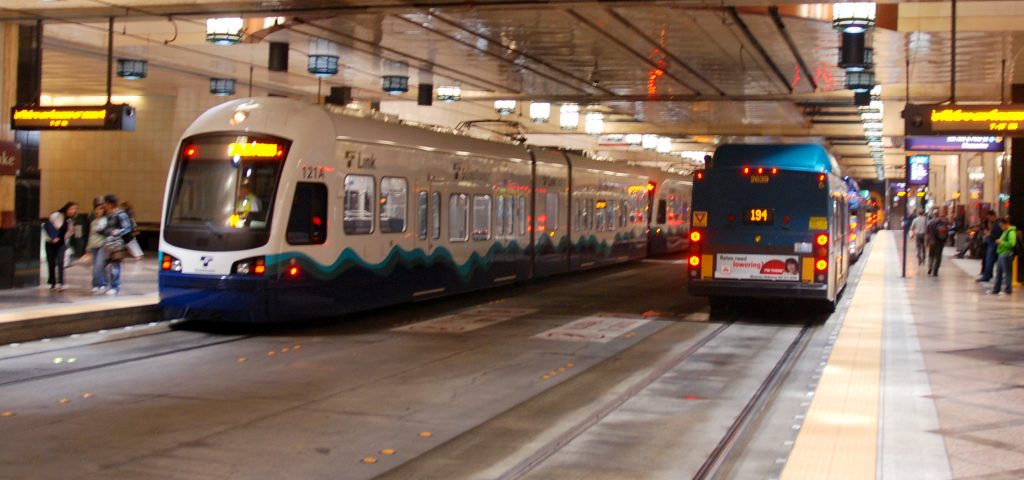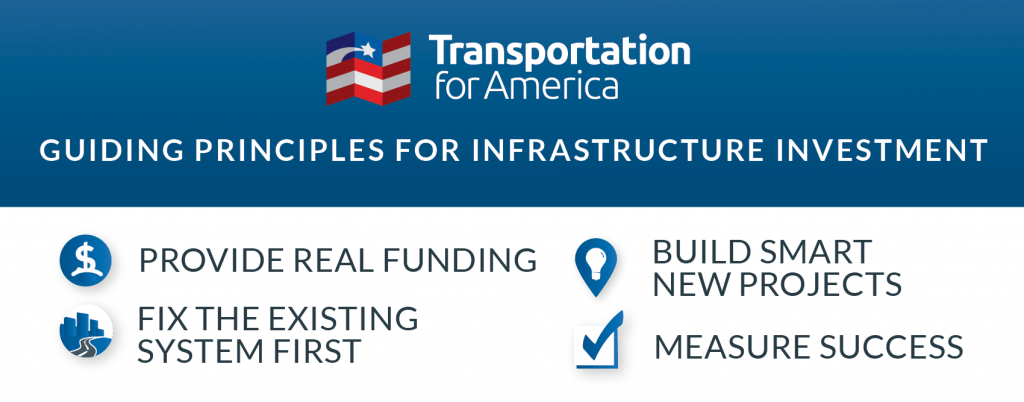
Earlier this month, the House Appropriations Committee approved transportation funding levels for fiscal year 2021. Emergency funding for the primary transit construction program and passenger rail is great, but more money for highways—funneled into existing broken programs that just make traffic worse—is not. Here’s what’s to like and not to like in the House FY2021 transportation appropriations bill.

Increased funding for transportation is only good if it’s spent on programs that make a difference. Unfortunately, current federal highway policy fails to prioritize maintenance while worsening safety, climate change, and congestion, and undermining investments in rail, transit, biking, and walking. That’s why our transportation problems continue to worsen despite large sums of funding: our highway funding creates problems that wastes the money spent on transit and passenger rail.
While current public transportation, BUILD Discretionary Grants, and passenger rail policy can be improved, additional funding for these programs, even under current law, is absolutely critical for state and local governments. This is why the FY21 Transportation, Housing and Urban Development (THUD) bill approved by the House Appropriations Committee is, for the most part, a mixed bag. Here are three things to know.
1. Emergency funding and policy improvements for Capital Investment Grants (CIG)
Capital Investment Grants (CIG) is the main federal program for constructing new transit assets. In order to receive CIG funding, state and local governments need to raise matching funds. With COVID-19 demolishing state and local governments’ budgets, few entities will be able to receive funding from CIG without making major sacrifices.
The FY21 THUD appropriations bill includes $5 billion in emergency funding for CIG, bringing CIG’s total fiscal year funding level to $7.2 billion. The bill also makes a policy change that will make CIG funding more accessible in the COVID-19 era: Funds made available by this bill can be used for amendments to an existing Full Funding Grant Agreement to lower or defer the local match, something that may be necessary due to COVID-19.
2. No emergency funding for transit operations
With all of public transportation’s funding sources—farebox revenue, state and local sales tax revenue, and more—dwindling due to COVID-19, transit is in dire need of emergency operating support. Many transit agencies are anticipating running out of funds in the next few months, stranding riders who depend on transit to reach their jobs, healthcare, groceries, and other services.
In May, transit agencies, elected officials, and organizations across the country called for $32 billion in emergency support; many agencies have now upped their ask to $36 billion. But the FY2021 THUD appropriations bill doesn’t provide any emergency operating support for transit. There’s hope that transit will be included in the next round of COVID-19 relief legislation, but it might not be at the level necessary to keep transit services running.
3. More highway funding for broken programs
The FY2021 THUD bill significantly increases highway and transit funding levels to match the INVEST Act, the House-passed proposal to reauthorize federal transportation policy. However, while FY21 appropriations must be approved to avoid a government shutdown, the INVEST Act is unlikely to become law, at least not this year, and the most likely scenario is an extension of current law (the FAST Act).
This means that these increased funding levels will just be funnelled into programs that make our problems worse—particularly the federal highway program, which is still hardwired to prioritize car access, incentivizing projects that improve vehicle speed without actually increasing people’s access to jobs and services, reducing our maintenance backlog, or saving lives from crashes. The INVEST Act would update the federal highway program with performance measures that would connect federal funding to the outcomes Americans value, but in the meantime, increased highway funding will likely be spent on building roads to nowhere.
If the INVEST Act was law, this would be a different story
The Appropriations Committee directs spending—not policy—so we cannot hold the committee responsible for outdated transportation policy that just makes our problems worse. Although we are concerned that significant new highway funding without policy reform will continue to undermine our goals, we appreciate increased funding levels for transit, passenger rail, and the BUILD program, and the support this Committee has given to the CIG program in FY21 and in recent years.
This is why we support the INVEST Act, and why we’ll continue to work to secure fundamental reform in the next surface transportation authorization: under new transportation policy, all federal funding will work to improve Americans’ access to the things they need. We’re looking forward to working with Congress to pass transportation policy that puts funding to work.







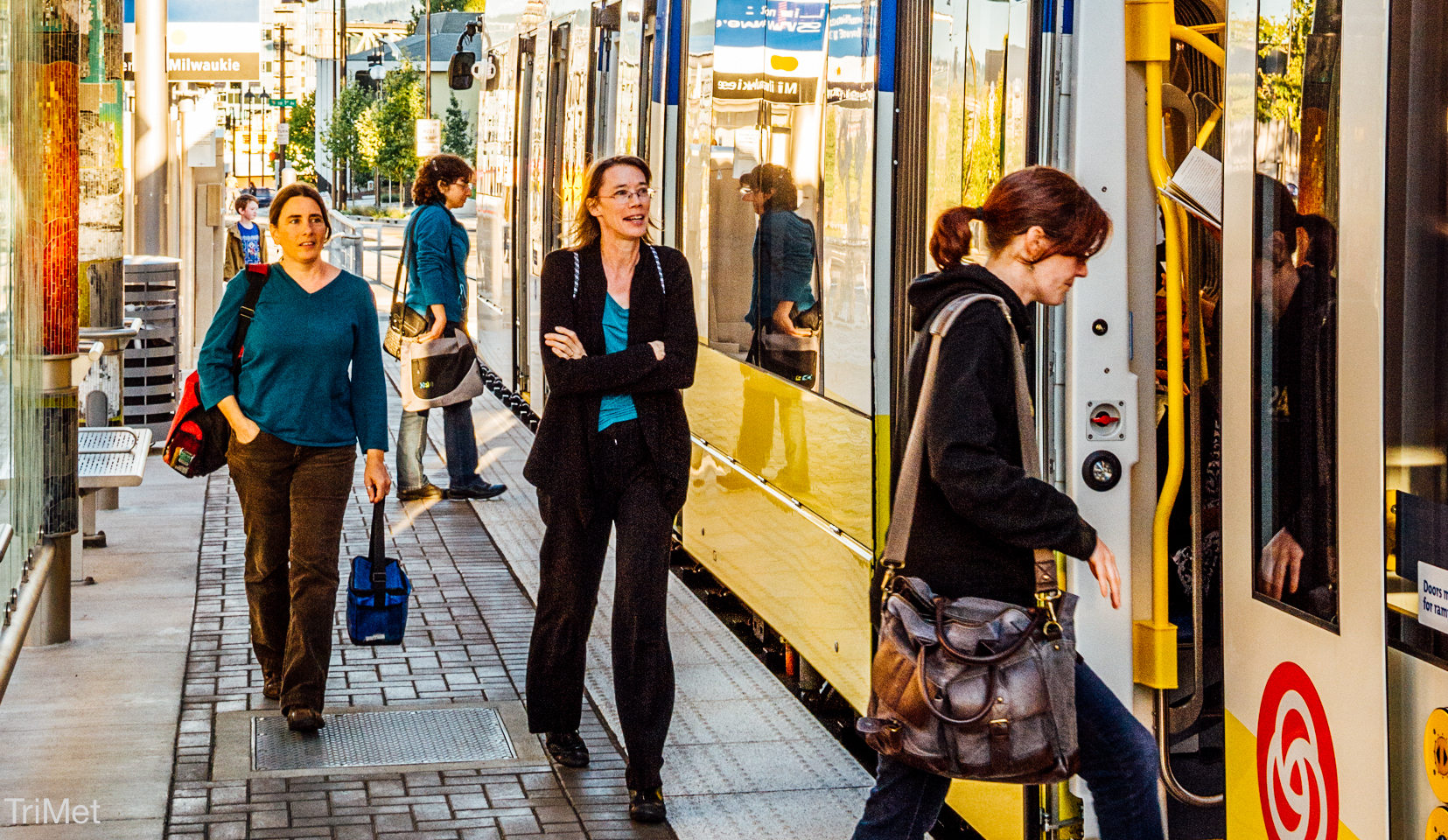
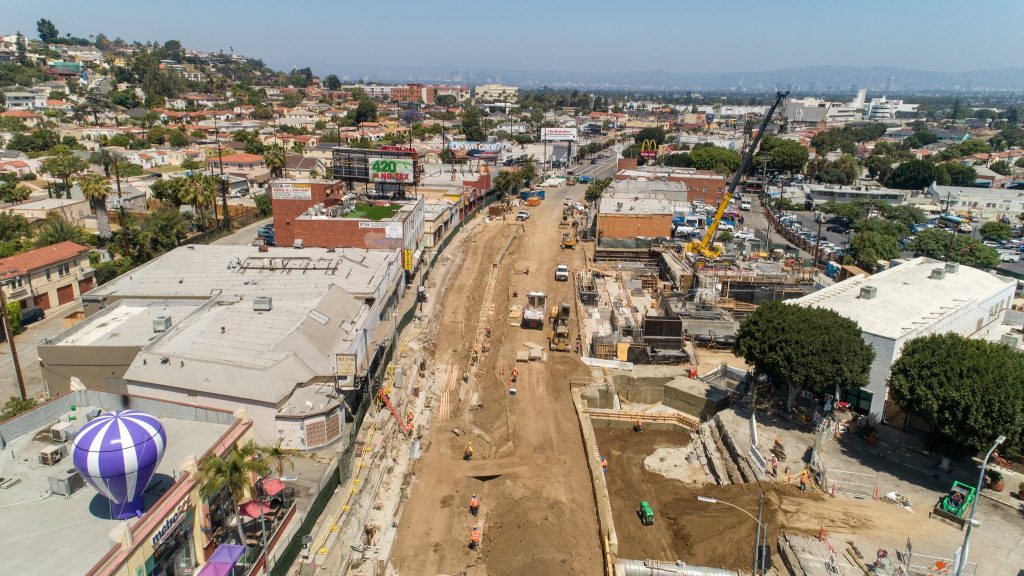

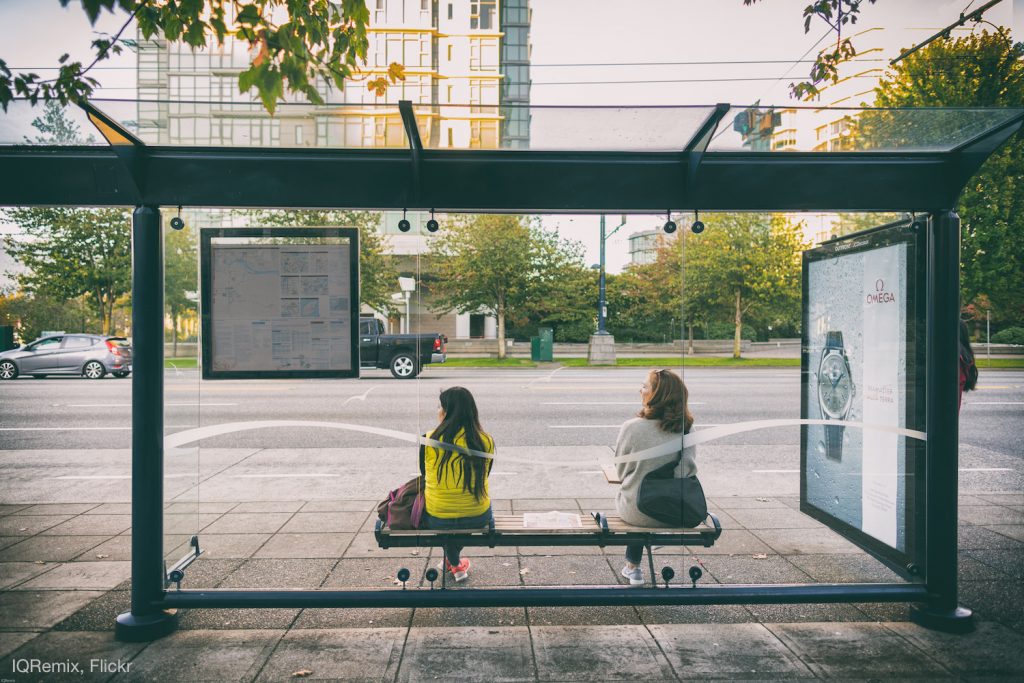
 President Trump’s just-released 2020 budget would cut federal transit capital grants by $1 billion. Although this is a slight improvement from the administration’s past efforts to eliminate all funding for new transit projects, it comes after a backlash against USDOT—stoked by Transportation for America’s
President Trump’s just-released 2020 budget would cut federal transit capital grants by $1 billion. Although this is a slight improvement from the administration’s past efforts to eliminate all funding for new transit projects, it comes after a backlash against USDOT—stoked by Transportation for America’s 